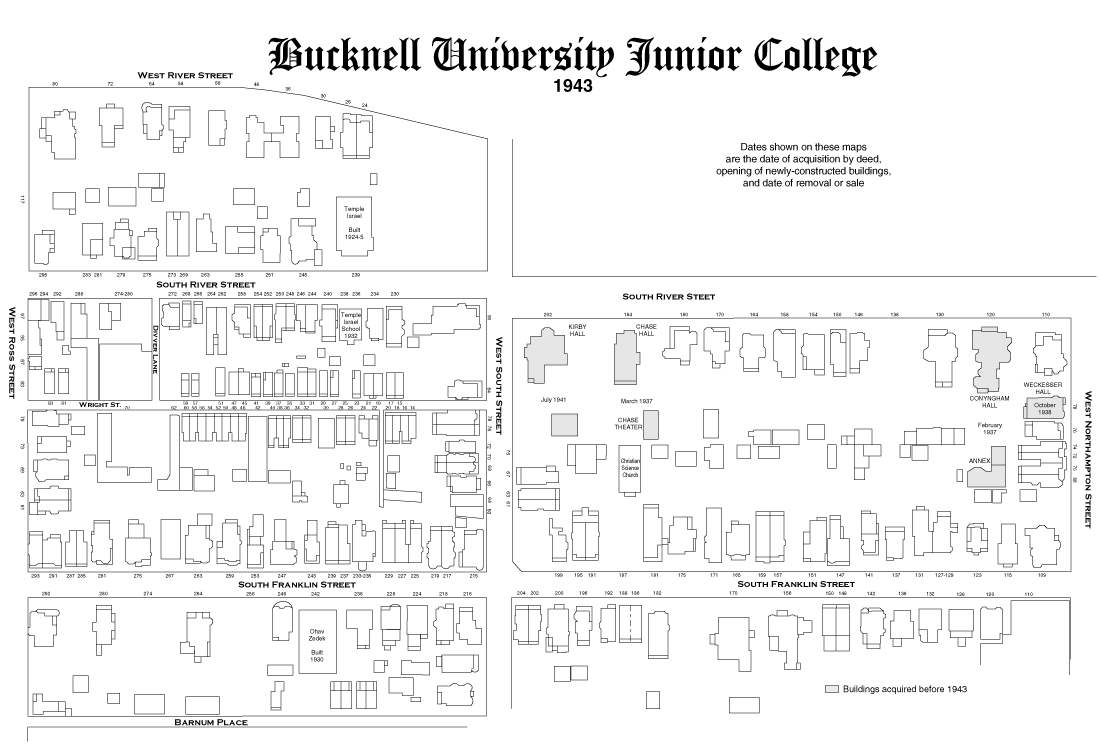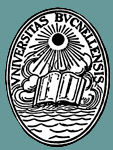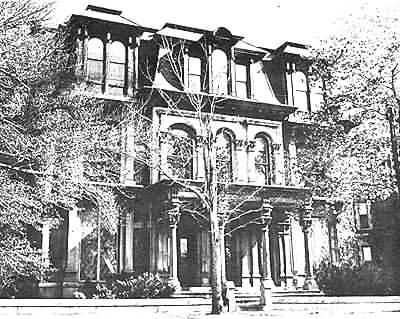
Bucknell University Junior College,
the forerunner of Wilkes, was opened in downtown Wilkes-Barre in September 1933. BUJC was inspired by a state-wide study, made two years earlier, which suggested a need for junior colleges in ten urban centers in the state which lacked such facilities. The report stated that "Wilkes-Barre offered the greatest need and the best opportunity of all the ten cities." The creation of BUJC was largely the work of Frank G. Davis, chair of the Bucknell University Department of Education, who proposed the institution to Bucknell President Homer Rainey in March, 1933 and pursued the idea until it was implemented during that summer.

By the time that BUJC acquired its own Board of Trustees in January, 1938, the school had accumulated a total deficit of nearly $30,000. In 1941, Bucknell would cancel outstanding indebtedness of $5,500 during a fund raising drive, and an additional $8,352.86 when BUJC began raising money in 1945 to establish a four-year school.
Obviously, no funds were available for building construction in 1933 nor were they necessary with the availability of vacant urban office space and the existence of non-academic facilities which could be utilized for academic purposes. The first space used was the third floor of the Wilkes-Barre Business College, a three-story building located at 29-31 West Northampton Street, directly across from the Y. M. C. A.
The following year, the Business College vacated the building and the entire structure was taken over by BUJC. Administrative offices and a 500-seat auditorium were located on the first floor, a small library on the second floor, and classrooms and laboratories on the second and third floors.
There was no need for residence halls since the school's purpose was to serve local residents of Luzerne County, all of whom lived off-campus. However, there was a need for space and facilities for non-instructional activities. Some could be provided in the college building, such as a room set aside as a social center for female students.
A dramatic society was organized in 1934 and rehearsed in the college basement, which was entered by a ramp. The facility was nothing if not cramped. When a full set was on the stage, it was necessary to go up three flights on the fire escape, through the biology laboratory and down to the basement again in order to make an entrance from the opposite side of the stage. The Y.M.C.A. was used by the basketball team, which provided other athletic facilities for the College. Formal events were held in such locations as the Sterling Hotel and Irem Temple, both within walking distance of the Junior College.
The initial moves towards a more permanent home were made by Eugene Farley, who became BUJC director in March 1936. Farley worked with prominent local leaders, including many who lived within two blocks of BUJC in the great homes of the southwest quadrant. He enjoyed quick success and the College was given four of the houses between 1937 and 1941.

The first was Conyngham Hall, deeded by Bertha Conyngham on February 1, 1937. This was followed on March 2 by Chase Hall, given by Admiral and Mrs. Harold Stark. Discreetly, the announcement was delayed so that both acquisitions could be publicized simultaneously. Frederick and Anna Weckesser gave the home at 76 West Northampton on October 4, 1938. The last was donated by Mr. and Mrs. Allen Kirby on July 1, 1941.
Conyngham Hall and the former garage and stable building to the rear were converted for classroom purposes. Chase became the administration building and also housed a tiny snack bar, lounges for both men and women, and a bookstore. The library was moved to Conyngham, then to the second floor of Kirby where it slowly grew until it occupied the entire building. The Chase garage was taken over by the Thespians for the rehearsal of plays. The garage was a "dreary place" with a large turntable in the center for turning autos. The turntable was removed in 1938 and a stage built, allowing staging as well as rehearsals.
Garages became as important to the college as the houses themselves. Providing larger spaces than rooms in the houses, the garages of the South River St. homes would be converted over the years into a cafeteria, a theater, and classrooms, providing critical services until Wilkes would begin building new facilities. In later years garages would serve as maintenance buildings, as some still do.
Weckesser Hall was given to BUJC as a residence for Dr. and Mrs. Farley. It was used by the Farleys and for music classes until April 1943 when an Army Air Force pre-flight training program was established at the college. Then Weckesser became the headquarters and infirmary of the 6th Training Detachment (Air Crew), USAAF. The recruits were housed at the Sterling Hotel, anticipating the use of external housing for dormitory students in later years. The Farleys moved to the third floor of Kirby Hall.
In the fall of 1937, with its own buildings in service, BUJC abandoned its rented home on Northampton Street. However, the building's career as an educational institution was not over. When King's College was established following World War II, it set up housekeeping in the same building until it could establish a campus along North River Street, mirroring the development of its (slightly) older rival. The Northampton Street building can truly be designated as the birthplace of Luzerne County colleges.
By the end of its first decade, BUJC had established itself in houses and garages on or near South River Street between Northampton and South streets. The local community had accepted the school and had begun to support its growth. Those of college age appreciated the benefits of a local college and, by 1940, students were beginning to agitate for the expansion of BUJC into a full four-year institution.